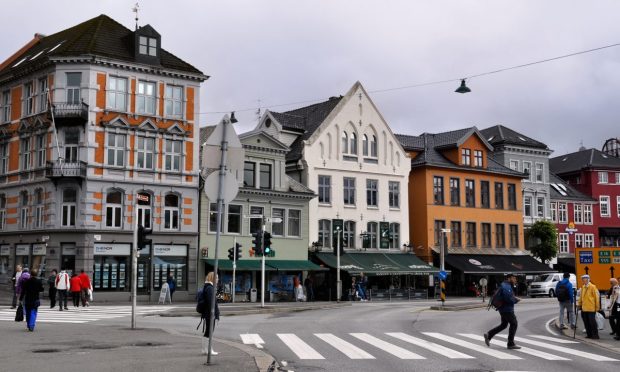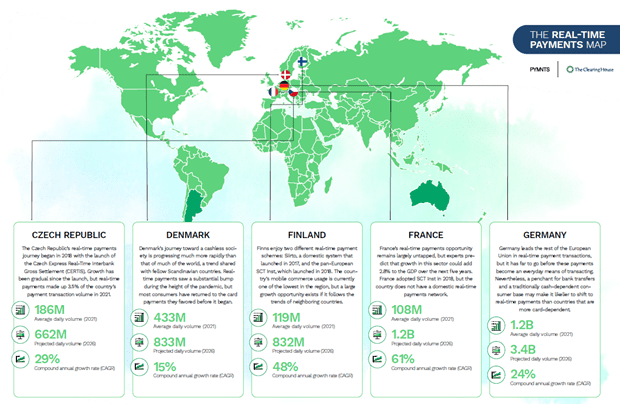Plunging Cash Use, Digital Wallet Partnership Help Boost Instant Payments in Norway

Scandinavian countries are some of the most technologically advanced in the world, including in the area of real-time payments.
Take Norway for example. The Nordic country launched real-time payments back in 2013, several years before the introduction of the pan-European SCT Inst payments scheme (also known as SEPA Instant) in 2017 to facilitate ultra-fast euro payments across the 36 countries within the Single European Payment Area (SEPA).
Instant payment adoption has been growing since, and according to data captured in ACI Worldwide’s 2023 Prime Time for Real-Time report, real-time payments volume in the country represented a 6.5% share of total payments volume in 2022, only behind non-real-time payments electronic payments, which was at 91%.
The ACI Worldwide report also projects that real-time payments volume in Norway will grow at a compound annual growth rate (CAGR) of about 24% from 2022 to hit a 15.1% share of overall payments volume in 2027, approximately 713 million.
“This growth is unusual for the region, coming not only at the expense of cash’s share of payments volume but also other forms of electronic payments, showing that consumers are actively moving away from card and ‘slow’ transfers to real-time payments in this market,” the report explained.
Norway’s largest mobile payments application and bank-backed wallet, Vipps, which enables consumers and merchants to make instant payments between local bank accounts, is in the process of merging with Danske Bank-owned MobilePay — Finland’s Pivo dropped out of the deal — to enable real-time cross-border transactions between Norway and Denmark.
That merger, which the EU Commission approved in October 2022, is also expected to significantly boost real-time payments volume in Norway once completed.
“[The Vipps-MobilePay merger] is a very important step in that direction, especially when we recognize that the competition is global and will continue to be increasingly global going forward,” Bjørn Skjelbred, senior vice president of international business development at Vipps, told PYMNTS in an interview last year.
For other Scandinavian countries, like Denmark and Finland, the potential for increased real-time payments adoption is no different, as shown in a recent PYMNTS report on instant payments growth in the region.
Per that study, “Denmark’s journey toward a cashless society is progressing much more rapidly than that of much of the world,” with daily real-time payments volume in the country expected to nearly double to hit 833 million by 2026 at a CAGR of 15%.
When it comes to Finland, the existence of a domestic real-time digital payment scheme, Siirto — launched by three of the country’s leading financial institutions; OP Bank, Nordea and Danske Bank — gives it an even greater boost at driving the growth of instant payments in the years to come.
In fact, PYMNTS projects that Finland’s real-time payments volume will grow at a CAGR rate of nearly 50% over the next five years, increasing the average daily volume from 119 million in 2021 to 832 million by 2026.
But when it comes to participating banks and payment service providers (PSPs) in the SEPA Instant Payment scheme, Norway takes the lead with over 100 Norwegian FIs and PSPs offering the service as of March this year, compared to about 10 in both Finland and Denmark.

Further reading: What The US Could Learn From The Nordics’ Instant Payments Ecosystem
For all PYMNTS EMEA coverage, subscribe to the daily EMEA Newsletter.

